There’s no easier way to douse a jib than with roller furling, and Harken, with a line of small-boat furlers, has brought the ease and convenience normally employed by larger boats within reach of small-boat sailors. Unlike furlers on larger boats, which use a rigid foil that spins to furl the sail, Harken’s small-boat series uses stainless wire for the forestay, simplifying the setup and lowering the cost. These small furling drums are available in both conventional single line and the newer endless-line style.
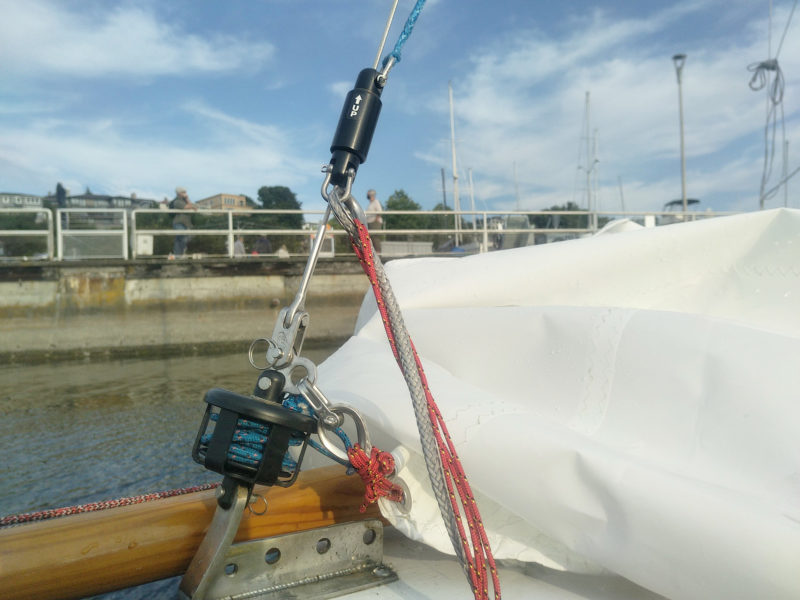 Photographs by the author
Photographs by the authorThis hoistable swivel, used here with the conventional furler drum, is installed over the forestay for a regular hanked-on sail to be hoisted and furled. In this picture, the peak of the sail is attached via a pendant—the gray Dyneema and red lashing line—to set the jib peak below the jumper stays, so they do not interfere with it. The sail will be hoisted with the blue halyard attached to the swivel.
With the conventional furler, pulling on a jibsheet unfurls the sail and pulling on the 4mm furler line furls it; the latter doesn’t spool line, so the line can be thicker and easier on the hands. While the conventional drums work perfectly fine, the endless-line type can handle a larger sail and provide finer control over the rotation of the tack, allowing one to fully unfurl the sail without relying on the sheet tension, and helping to overcome any curl that may be induced into a sail that has spent significant time tightly rolled on the furler.
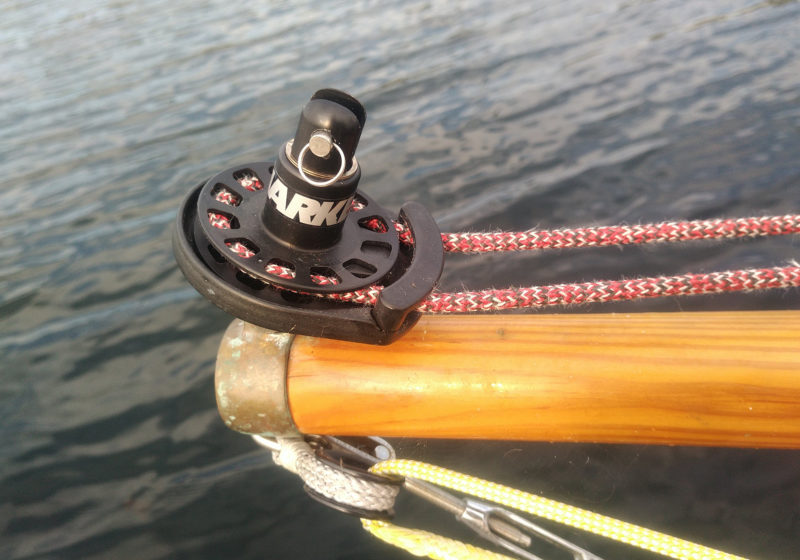
This endless-line furler on a bowsprit will be attached to a straight-luffed code-zero spinnaker. The peak of the sail will be equipped with a swivel. This type of furler isn’t limited by the amount of line it can coil, making it more versatile for larger sails than the conventional furler.
The endless-line type can also be used to furl some of the more straight-luffed flying sails, such as code-zero spinnakers or gennakers common on beach cats and multihulls, and would be more suited toward jib setups under less tension, such as jibs used on traditional rigs with unstayed masts.
These Harken furlers employ the drum at the tack, a wire installed into the sail’s luff, and a swivel at the head of the sail. The luff wire becomes the forestay, and this combination is spun to furl the sail. This configuration is ideal for smaller trailerable sloops (where the mast is removed for trailering) and boats with traditional unstayed rigs, but makes it impossible to change or remove the sail without disconnecting the forestay on boats that rely on forestay tension to support the mast.
On these boats with tensioned standing rigging, a slightly more complicated setup can be used to enable sail changes without disconnecting the forestay. In this configuration, the furler is installed at the base of the forestay and a swivel is installed at the top. The forestay connects these, and a sliding hollow swivel is installed over the forestay. When installed in this manner, the tack of the sail is attached to a fitting at the furler drum, and the head is attached to the hollow, hoistable swivel. The sail is hanked onto the forestay as usual, and the hoistable swivel is hoisted by the jib halyard. While slightly more expensive and complicated, this setup enables sail changes and allows you to set the jib halyard tension independently of the forestay tension.
One important thing to note is that these furlers do not enable roller reefing as there is nothing to prevent the head and tack from furling and unfurling unequally and, therefore, sail shape cannot be maintained on a partially furled sail. Modifications may be necessary to your sail in the form of a different luff arrangement that incorporates a stainless-steel wire or high-tech Dyneema line to strengthen and stiffen the luff. If the sail will be left furled and hoisted for extended periods, UV protection to the sail’s foot and leech is a recommended addition.
I’m very happy with the performance of these furlers on my boat. Managing the headsails has become so easy that I rarely motor into or out of my mooring, opting to sail instead; singlehanding is also made much easier. I’ve also found that I am much more likely to grab a quick afternoon or evening sail now that the jib is stored on the furler with the hoistable furler setup and UV protection, as I spend more time on the water and less setting up and putting away.![]()
Robert Hodge lives aboard a 42′ sailboat in Seattle, and cruises Puget Sound on his 1960s wooden Lightning that has been restored and extensively modified. He works seasonally in commercial ship repair in local shipyards and in the retail store at Fisheries Supply. He is a veteran of two first-leg Race to Alaska attempts and has plans to compete in the full R2AK in 2021.
Harken’s full range of small-boat furlers is available in individual pieces and in kits. A basic setup for a low-load application runs a little over $300, and the more heavy-duty ones come in at around $750.
Is there a product that might be useful for boatbuilding, cruising, or shore-side camping that you’d like us to review? Please email your suggestions.

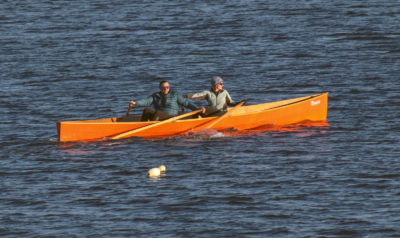
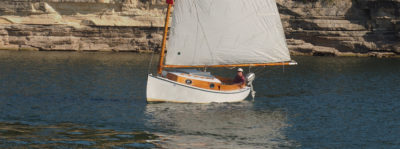
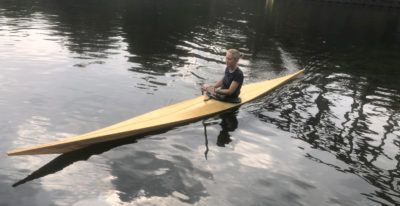
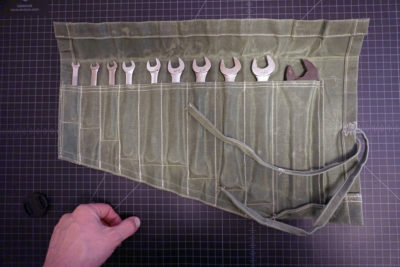
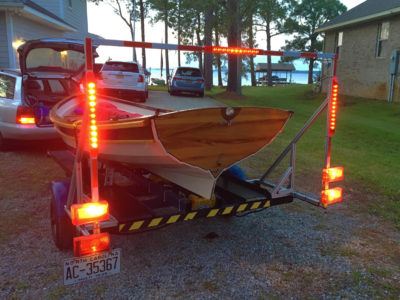
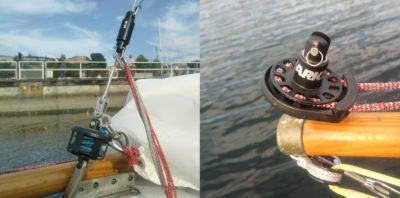

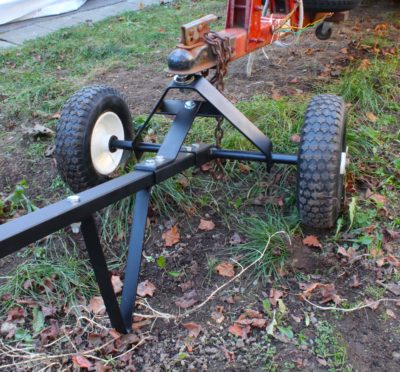

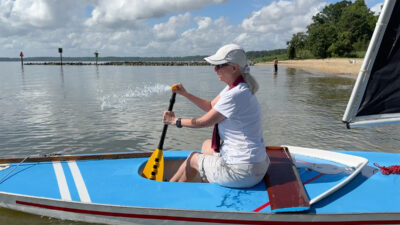
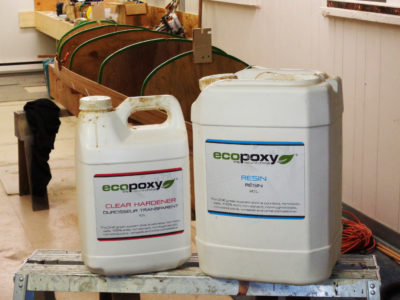
Great article. We have several small-boat furlers but weren’t familiar with the hollow sliding swivel or continuous-line furler. And while our Drascombe Lugger or Day Sailler rigs are not set up for “roller reefing,” no one has told Skipper, she always uses the furler to reef the jib out and in as we depart and return to the boat ramp, pretty as a picture. Once we crawl away from the dock under a scrap of jib on the Lugger I can raise the main, and she uses the jib furler like a throttle as we glide back in, having it perfectly furled when she stops the boat one inch from the dock. Magic!
We really enjoy the peace that a jib furler provides, no jib flapping at the dock, and the peace of mind of not having to go forward to tend the jib. Our friend Webb says he considers a jib furler an essential piece of gear when singlehanding small boats.
Thanks for the great bit of knowledge.
Cheers,
Kent and Audrey
I am interested in learning why reefing the jib is difficult. I have a 16′ sloop nearing completion and would love that feature as the jib is a pretty large overlapping size (120%).
Thanks for information
I installed my first jib furler on my little 21′ cutter. To use it, I couldn’t hank the Yankee jib to the headstay, so it had to be free flying. Luff tension came from winching the halyard with a “handy billy,” or little portable block and tackle. With this arrangement, you have to remember not to furl–or rather try to furl–while you are headed down wind. The jib wants to wrap itself around the headstay, which can lead to exciting moments if you do this in a rising wind.
I loved that Yankee jib, by the way. As soon as it started flying, you could feel the added power, and the instant increase in speed. It was the most powerful sail on the boat (which also had staysail and main).
Not having enough experience or good enough balance tend the jib on my CLC Passage Maker dinghy, I made my own roller-furling thingee from a wire spool and some swivels. This is a 12′ pram, sloop rigged. One swivel above the jib and a plastic spool mounted below, with the other swivel below the spool. Pull the jib sheets to set the sail, pull on the spooled line to furl it, make fast with a jam cleat. I have no other product to compare it to, having never used one before, but it works fine and costs less than $25 total.
I would like to attach a self furling jib to my Lightning. Looking for advice on what type and best way for mounting on the deck. Any other advice would be helpful.
Thanks